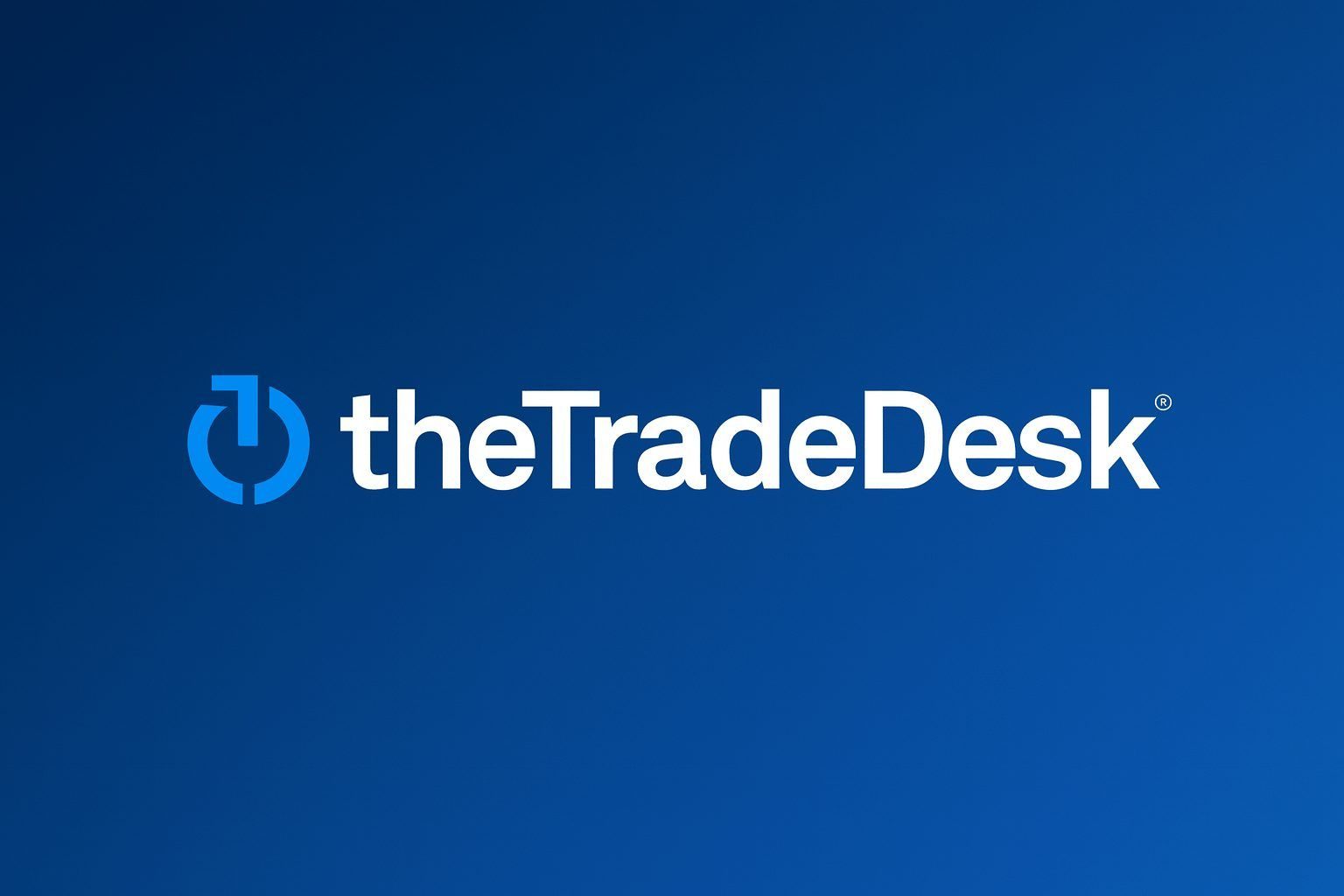The Trade Desk stock is limping into the final weeks of 2025 after one of its toughest years on record, but today’s news flow shows big money is still actively repositioning around the name.
Below is a same‑day overview of all notable The Trade Desk (NASDAQ: TTD) stock news dated November 23, 2025, plus context on price action, fundamentals and sentiment for Google News and Discover readers.
Key facts on The Trade Desk (TTD) as of November 23, 2025
- Last close (Friday, Nov. 21, 2025):
Around $39.65, up about 3.4% on the day. [1] - Performance:
Over the last 12 months, The Trade Desk’s share price has fallen roughly 69%, with a year‑to‑date loss of about 66% and a one‑month drop near 27%. [2] - 52‑week range:
Approximately $38.22–$141.53. [3] - Market value and valuation:
Market cap is about $19–19.2 billion, and the trailing P/E ratio is roughly 45–46x as of November 23, 2025. [4] - Index membership:
The Trade Desk is a member of the S&P 500 and Nasdaq‑100, which means passive index funds are now meaningful shareholders. [5]
With U.S. markets closed today (Sunday), those figures reflect Friday’s close—but news and data providers have updated fundamentals and sentiment metrics as of November 23, 2025.
All major The Trade Desk news dated November 23, 2025
1. Left Brain Wealth Management slashes its TTD stake
A new 13F-based report from MarketBeat today shows Left Brain Wealth Management LLC dramatically cut its position in The Trade Desk during Q2: [6]
- It reduced its holdings by about 70.1%, selling 61,179 shares.
- The firm now owns 26,070 TTD shares, valued at roughly $1.88 million at the time of the filing.
- Despite the reduction, the position is still large enough to be disclosed, showing Left Brain is trimming rather than walking away entirely.
The same report highlights that Left Brain’s move comes after a brutal year for the stock and amid broader concerns over competition and growth, even as The Trade Desk remains profitable and cash‑generative.
2. Mediolanum International Funds boosts its TTD holdings
In contrast, Mediolanum International Funds Ltd is going the other way. In another MarketBeat alert dated November 23, 2025, the firm increased its stake in The Trade Desk: [7]
- Mediolanum raised its position by 15.9% in Q2.
- It now owns 94,480 shares, up by 12,987 shares.
- That stake was valued at about $6.55 million at the end of the most recent quarter.
The article also points out that other large investors—including Legal & General Group, DNB Asset Management, Swiss National Bank and ABN AMRO Bank N.V.—have been adding to TTD as well, contributing to a still‑heavy institutional base.
3. Ensign Peak Advisors trims, but stays heavily invested
A third MarketBeat piece today reports that Ensign Peak Advisors Inc. has reduced, but not exited, its position: [8]
- Ensign Peak cut its TTD stake by 19.7%, selling 55,685 shares in Q2.
- It now holds 227,207 shares, worth about $16.36 million at the time of the filing.
- The article underscores that other titans—including Geode Capital Management, Jennison Associates and Vanguard Group—have increased their positions, leaving institutional investors with roughly 67.8% ownership of the float.
Taken together, today’s three filings paint a picture of rotation, not abandonment: some managers are locking in losses or reallocating, while others are leaning into the weakness.
4. Fresh valuation datapoints as of November 23, 2025
Two data‑heavy services also updated their Trade Desk metrics today:
- GuruFocus intrinsic value update:
GuruFocus estimates The Trade Desk’s Intrinsic Value: Projected FCF” at about $17.59 per share, versus a market price around $39.65, implying the stock trades at roughly 2.3× that intrinsic value estimate. Interestingly, that price‑to‑intrinsic‑value ratio is near the lowest level the stock has seen in the past decade, even though it’s still above 1 (so not cheap” by that model). [9] - Macrotrends / P/E data:
Macrotrends pegs The Trade Desk’s P/E ratio at about 45.6x as of November 23, 2025, well above the long‑term average for the broader market but far below the eye‑watering multiples TTD commanded in prior years. [10]
These aren’t news stories” in the traditional sense, but they are same‑day updates that many investors treat as headline catalysts.
5. Technical and options data updated for November 23, 2025
- Technical indicators (Investing.com):
As of 03:05 a.m. GMT on November 23, Investing.com’s dashboard rates The Trade Desk’s technical picture as Neutral”, based on 3 buy, 4 neutral and 3 sell signals. The 14‑day RSI around 47 suggests neither extreme overbought nor oversold territory, while high Average True Range (ATR) points to elevated volatility. [11] - Options and short‑term price forecasts:
CoinCodex’s automated model projects modest upside, expecting TTD to drift from $39.65 to roughly $41.0 over the next five days, a move of about 3–3.5%, after a 7.5% slide over the past week. [12]
As always, these algorithmic forecasts are speculative and can change quickly.
How today’s news fits into the bigger Trade Desk story
To understand what November 23’s headlines really mean, you need the backdrop: a high‑quality adtech business in the middle of a painful reset.
Fundamentals: strong business, slower growth
For Q3 2025, reported on November 6, The Trade Desk delivered: [13]
- Revenue: about $739 million, up roughly 18% year over year.
- Adjusted EBITDA: about $317 million, a 43% margin.
- Non‑GAAP EPS: about $0.45, slightly above consensus estimates.
- Operating cash flow: around $225 million for the quarter.
- Customer retention: above 95% for the 11th straight year, a key sign that advertisers are sticking with the platform.
Management also guided Q4 2025 revenue to at least $840 million and adjusted EBITDA to about $375 million, implying high‑teens growth excluding political ad spend. [14]
At the same time, some analysis has highlighted negatives the market is fixated on:
- Operating cash flow down ~18% year over year in Q3 to about $225 million.
- Cash balance down roughly 47% to around $650 million, in part thanks to heavy share repurchases and ongoing investment. [15]
That combination—solid top‑line growth, high margins, but softening cash metrics—helps explain why the stock has been punished despite what looks like a beat and raise” quarter.
Competitive pressure and the AppLovin comparison
The market isn’t valuing The Trade Desk in a vacuum. Several recent articles compare it directly with AppLovin (APP), another adtech player that just posted blockbuster results.
A widely circulated 24/7 Wall St. piece from November 20 notes that: [16]
- AppLovin’s Q3 revenue grew 68% year over year to about $1.41 billion, with operating margins north of 75%.
- The Trade Desk’s revenue grew 18% to $739 million, with operating margin near 22%.
- AppLovin generated over $1 billion in operating cash flow in the quarter, while The Trade Desk’s operating cash flow declined.
The article frames The Trade Desk’s ~68% share‑price collapse from prior highs against AppLovin’s rally, and asks whether TTD can re‑accelerate growth with its AI‑powered Kokai platform and products like Audience Unlimited and OpenAds.
Separately, an eMarketer analysis on November 7 argued that TTD’s strong Q3 results obscure fundamental issues with the open web,” pointing to structural challenges in programmatic advertising outside of closed ecosystems like Google and Meta, even as management remains philosophically committed to the open internet. [17]
Investors are clearly asking: Is The Trade Desk simply in a cyclical slowdown, or is competition—from AppLovin, Amazon’s DSP and other platforms—structurally compressing its growth?
Rising short interest and cautious optimism from Wall Street
Fresh data from a Benzinga short‑interest report published November 21 shows that bearish bets on The Trade Desk have ticked higher: [18]
- Short interest: about 44.8 million shares, or 10.24% of free float.
- That figure has risen 17.4% since the prior report.
- It would take roughly 4.9 days of average trading volume for short sellers to cover.
Compared with a peer‑group average short interest of 8.1%, The Trade Desk is being shorted more aggressively than many rivals, suggesting a meaningful cohort is betting the weakness continues.
Yet, Wall Street analysts remain surprisingly constructive:
- MarketBeat’s aggregation of research shows 21 Buy, 13 Hold and 3 Sell ratings, with an overall consensus rating of Hold” and an average price target around $78–79 per share—roughly double the current price. [19]
- Recent commentary from MarketBeat and others highlights that several firms cut price targets after Q3, often into the $50–80 range, but kept positive or neutral ratings, framing the sell‑off as at least partly overdone. [20]
On top of that, multiple analysis pieces over the last week—from The Motley Fool, Seeking Alpha and independent newsletters—argue that the stock is oversold,” misunderstood” or potentially a buy the dip” opportunity after a ~60–65% drawdown. [21]
Buybacks and institutional ownership: signals from the inside
While today’s filings show some managers trimming, The Trade Desk’s own board is sending the opposite signal:
- The company repurchased about $310 million of stock in Q3 2025, using up a prior authorization. [22]
- In October, the board topped that up with a new $500 million buyback program, allowing repurchases of roughly 2.1% of shares outstanding. [23]
MarketBeat recently highlighted those buybacks in an article on companies using repurchases to signal market confidence,” while also noting that The Trade Desk’s stock is still down about 64% year‑to‑date after a huge post‑earnings plunge in August. [24]
Put that next to today’s institutional data:
- Left Brain Wealth Management and Ensign Peak Advisors are de‑risking. [25]
- Mediolanum International Funds and other large holders are adding. [26]
- Roughly two‑thirds of the float (about 68%) remains in the hands of institutions and hedge funds, with insiders owning about 10% of the stock. [27]
The net message from smart money” is far from unanimous pessimism.
Valuation and intrinsic value” on November 23, 2025
As of today, the market is clearly wrestling with how to price a slower‑growth Trade Desk that still throws off cash:
- At ~$39–40, TTD trades at about 45–46x trailing earnings. [28]
- GuruFocus’s projected free‑cash‑flow model values the stock around $17.6 per share, implying the market is paying roughly 2.3× that intrinsic value estimate—but that multiple is at the bottom of the stock’s 10‑year range (historical median around 7×), suggesting the shares are cheaper relative to their own history even if not a textbook value stock.” [29]
Other services also weigh in:
- Danelfin’s AI‑driven system currently gives The Trade Desk an AI Score of 7/10 (Buy”), indicating a statistically modest probability of outperforming the S&P 500 based on its factor model. [30]
Those models all use different assumptions, but they share a common theme: The market has compressed expectations dramatically, even while fundamentals remain positive.
The emerging agentic commerce” theme
One subtle piece of today’s news is more thematic than company‑specific. A StreetInsider summary of a Morgan Stanley note on November 23 discusses agentic commerce”—AI agents that can autonomously search, compare and complete purchases on behalf of users. The note mentions AppLovin, Unity and The Trade Desk as potential beneficiaries of this shift, as more commerce journeys become machine‑to‑machine and heavily data‑driven. [31]
For The Trade Desk, the takeaway is straightforward:
- If AI agents end up automating more of the buying journey, advertisers will lean even more on real‑time, programmatic bidding and identity solutions—areas where TTD’s Kokai platform and Unified ID 2.0 are meant to shine. [32]
It’s too early to know whether this theme materially moves the needle, but it helps explain why some long‑term growth investors are still interested despite the drawdown.
What today’s news could mean for The Trade Desk stock
Bringing it all together, here’s what November 23, 2025, signals about The Trade Desk:
- The stock remains deeply out of favor, but not abandoned.
The share price is hovering just above its 52‑week low and down roughly two‑thirds from prior peaks, yet institutional ownership is still very high, and some large funds are using the weakness to add. [33] - Short sellers are pressing their bets, but not overwhelmingly.
A short interest of about 10% of float—and rising—signals meaningful skepticism, though it’s not at meme‑stock extremes. [34] - Fundamentals are solid, not spectacular.
Q3 showed healthy double‑digit growth, strong margins and high retention, but also slower growth than many investors hoped for and weaker cash trends, especially when compared with hyper‑growth peers like AppLovin. [35] - Valuation is in a gray zone.
At ~45x earnings and about 2.3× some intrinsic‑value models, TTD isn’t obviously cheap—yet compared with its own past multiples and Wall Street’s average price target, the stock also doesn’t look priced for perfection anymore. [36] - The strategy hinges on AI and the open internet.
Management is doubling down on AI‑driven campaign optimization (Kokai) and its open‑internet, anti‑walled garden” stance, even as some analysts argue that the open web faces structural headwinds. How that ideological bet plays out will likely matter more than any single quarter. [37]
What investors may want to watch next (not financial advice)
For readers following The Trade Desk stock into year‑end, the key catalysts and questions include:
- Can Q4 meet or beat the at least $840 million” revenue guidance and reassure the market that growth remains durable in a tougher ad environment? [38]
- Does short interest continue rising, or do shorts start to cover if fundamentals stabilize? [39]
- How quickly do advertisers adopt Kokai and related AI tools, and does that show up in higher spend or better margins over the next few quarters? [40]
- Are buybacks actually shrinking the share count, or merely offsetting stock‑based compensation at current prices? [41]
As always, any decision to buy, sell or hold TTD should be based on your own risk tolerance, time horizon and independent research. This article is for informational purposes only and is not investment advice.
References
1. www.marketbeat.com, 2. www.marketbeat.com, 3. www.marketbeat.com, 4. www.marketbeat.com, 5. www.investing.com, 6. www.marketbeat.com, 7. www.marketbeat.com, 8. www.marketbeat.com, 9. www.gurufocus.com, 10. www.macrotrends.net, 11. www.investing.com, 12. coincodex.com, 13. investors.thetradedesk.com, 14. investors.thetradedesk.com, 15. 247wallst.com, 16. 247wallst.com, 17. www.emarketer.com, 18. www.benzinga.com, 19. www.marketbeat.com, 20. finviz.com, 21. seekingalpha.com, 22. investors.thetradedesk.com, 23. investors.thetradedesk.com, 24. www.marketbeat.com, 25. www.marketbeat.com, 26. www.marketbeat.com, 27. www.marketbeat.com, 28. www.macrotrends.net, 29. www.gurufocus.com, 30. danelfin.com, 31. www.streetinsider.com, 32. investors.thetradedesk.com, 33. www.marketbeat.com, 34. www.benzinga.com, 35. investors.thetradedesk.com, 36. www.gurufocus.com, 37. www.emarketer.com, 38. investors.thetradedesk.com, 39. www.benzinga.com, 40. www.emarketer.com, 41. investors.thetradedesk.com










